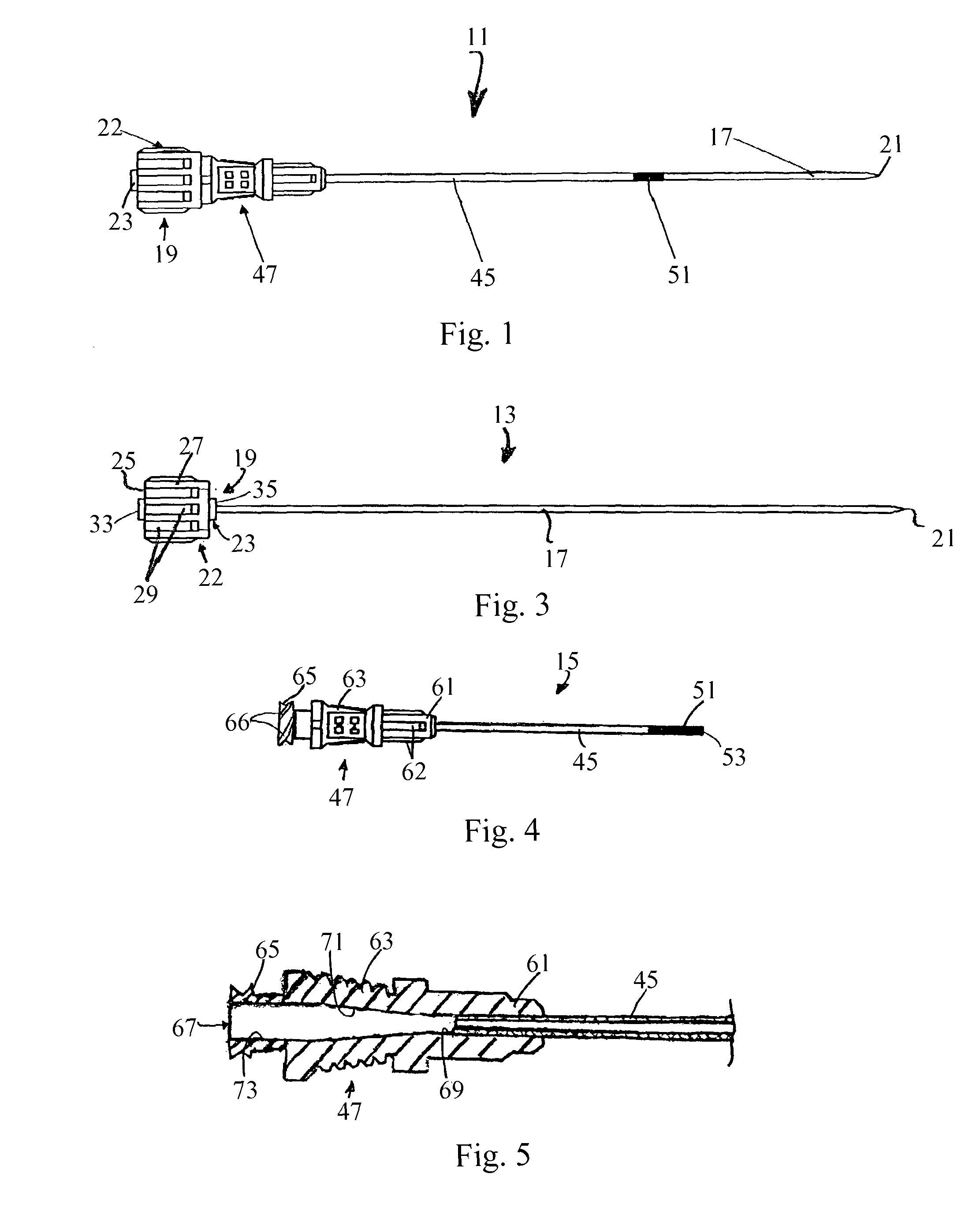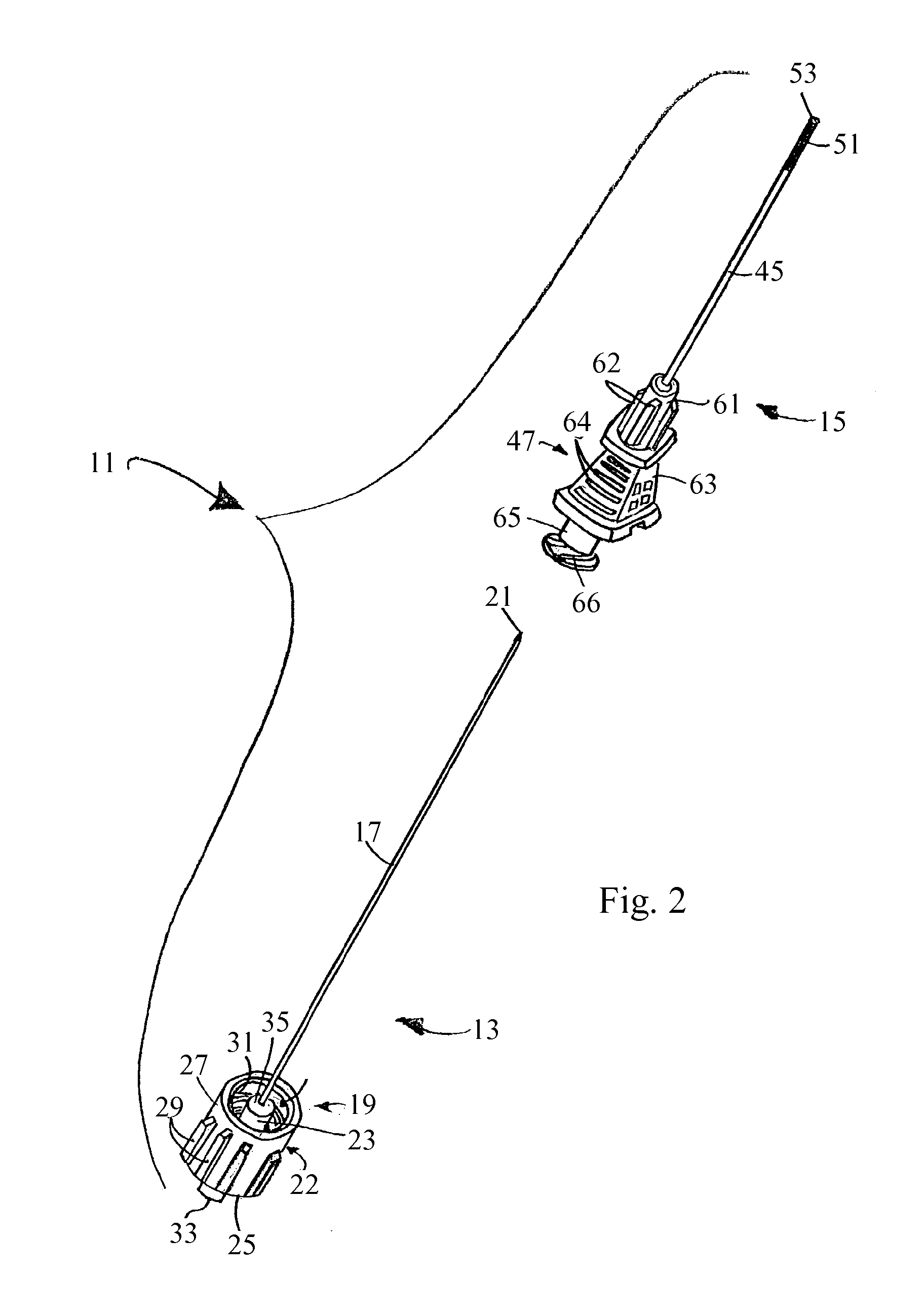Method for implanting a percutaneous endoscopic gastrostomy/jejunostomy tube in a patient and access needle for use in said method
a percutaneous endoscope and gastrostomy technology, which is applied in the field of percutaneous endoscope gastrostomy/jejunostomy tubes and methods for their implantation in patients, can solve the problems of difficult to actually pierce, inability to take food and/or medications transorally, and inability to meet the needs of the patien
- Summary
- Abstract
- Description
- Claims
- Application Information
AI Technical Summary
Benefits of technology
Problems solved by technology
Method used
Image
Examples
Embodiment Construction
[0034]Referring now to FIGS. 1 and 2, there are shown side and partially exploded perspective views, respectively, of a preferred embodiment of an access needle constructed according to the teachings of the present invention, said access needle being represented generally by reference numeral 11.
[0035]Access needle 11 comprises a stylet assembly 13 and a cannula assembly 15.
[0036]Referring now to FIGS. 1 through 3, stylet assembly 13 comprises a stylet (or sounding needle) 17 and a stylet hub 19. Stylet 17, which is preferably made of stainless steel, is a solid cylindrical member of small diameter, preferably 20 gauge, having a sharp, three-sided tip 21 at its distal end.
[0037]Hub 19 comprises a body 22 and a plug 23. Body 22, which is preferably made of plastic, is a generally cylindrical hollow member having a proximal end wall 25, a circular side wall 27 and an open distal end. The outer surface of side wall 27 is provided with a plurality of longitudinally extending ribs 29 to ...
PUM
 Login to View More
Login to View More Abstract
Description
Claims
Application Information
 Login to View More
Login to View More - R&D
- Intellectual Property
- Life Sciences
- Materials
- Tech Scout
- Unparalleled Data Quality
- Higher Quality Content
- 60% Fewer Hallucinations
Browse by: Latest US Patents, China's latest patents, Technical Efficacy Thesaurus, Application Domain, Technology Topic, Popular Technical Reports.
© 2025 PatSnap. All rights reserved.Legal|Privacy policy|Modern Slavery Act Transparency Statement|Sitemap|About US| Contact US: help@patsnap.com



